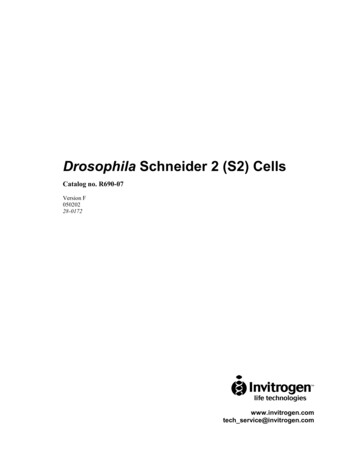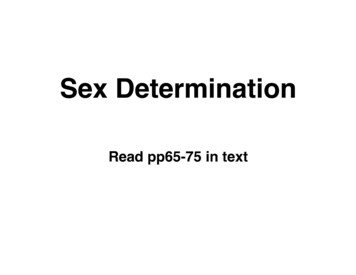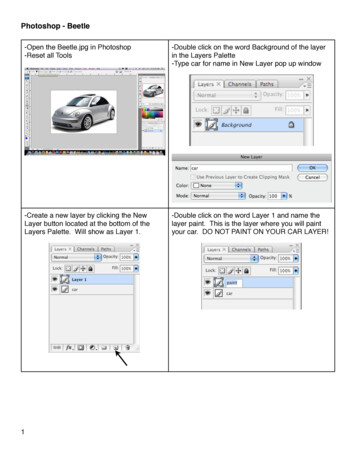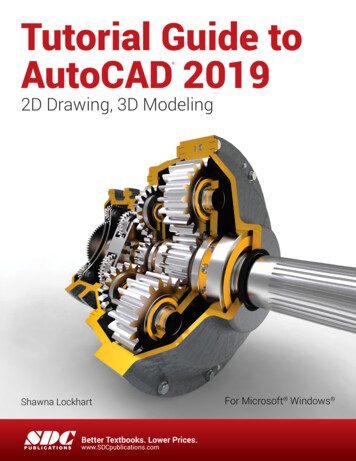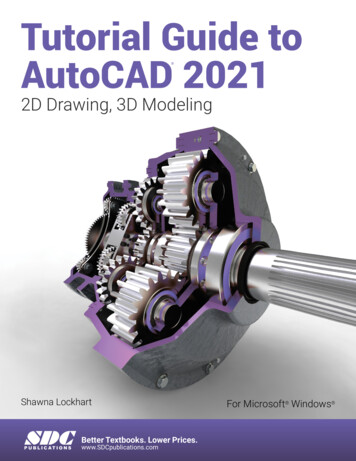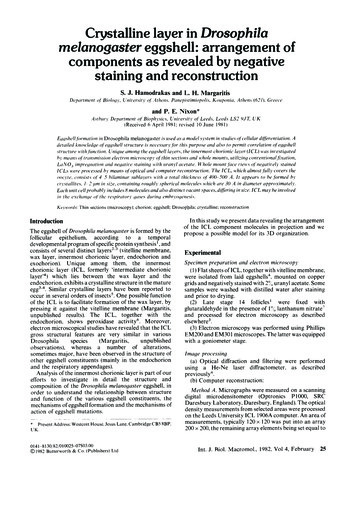
Transcription
Crystalline layer in Drosophilamelanogastereggshell: arrangement ofcomponents as revealed by negativestaining and reconstructionS. J. Hamodrakas and L. H. MargaritisDepartment o[ Biolo ly, Unirersitv ?f Athe,s. Panepistimiopolis, Koup(mia, Athens (621), Greeceand P. E. Nixon*Asthury Department (?[Biophysies, Unicersitv ( f Leeds, Leeds LS2 9JT, UK(Received 6 April 1981: revised 10 June 1981)E l,qshelljbrmation in Drosophila melanogaster is used as a model system in studies o[cellular d(f]brentiation. Adetailed knowled le qfeggshell structure is m, cessary.fbr this purpose and also to permit correlation !fe l#shellstructure with.fimction. Unique among the eggshell layers, the innermost ehorionie layer (ICL) was imesti(latedhv meatts ?[transmission electron microscopy (?[thin sections and whole mounts, utilizing com'entional fixation,LaNO 3 impre lmttion am/neqatice staining with uranyl acetate. Whole mount.J tce riews ?fne,qatirely stainedICLs were processed by means o[optieal and computer reconstruction. The ICL, which almost.fully covers theoocyte, e(msists 0[4 5 hilaminar suhlayers with a total thickness qf400 500 A'. It appears to he.[ormed byerystallite.s, l 2 ira7 in size, containin l rougthly spherieal molecules which are 30 A in diameter approximately.Each unit cell probably includes 8 molecules and also distinct vacant spaces, d
